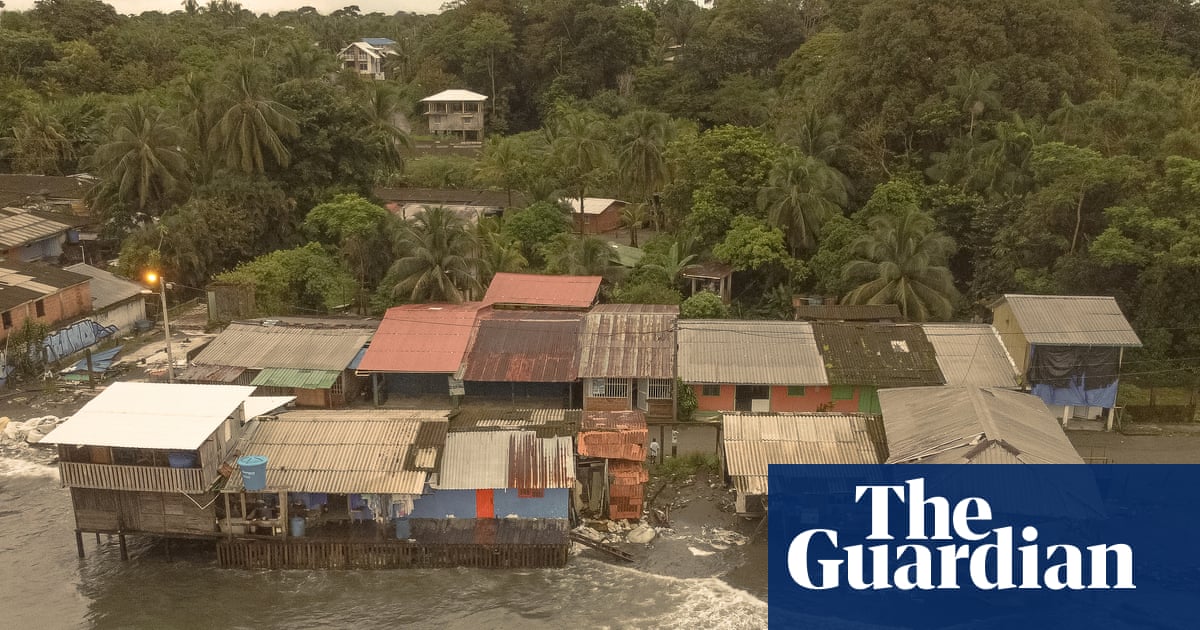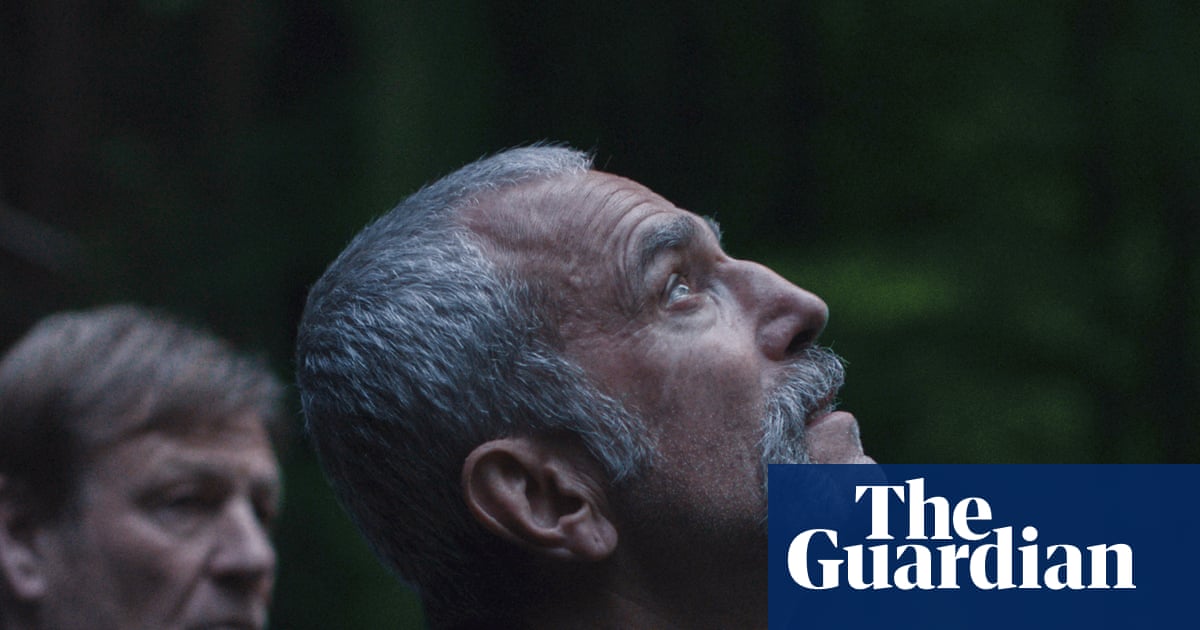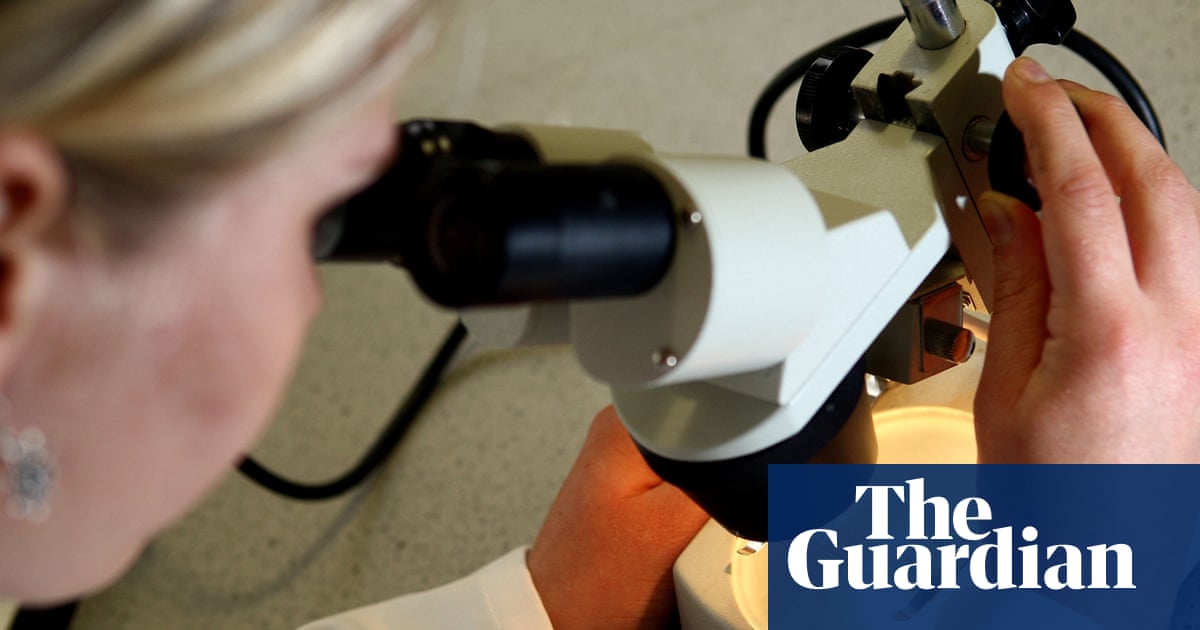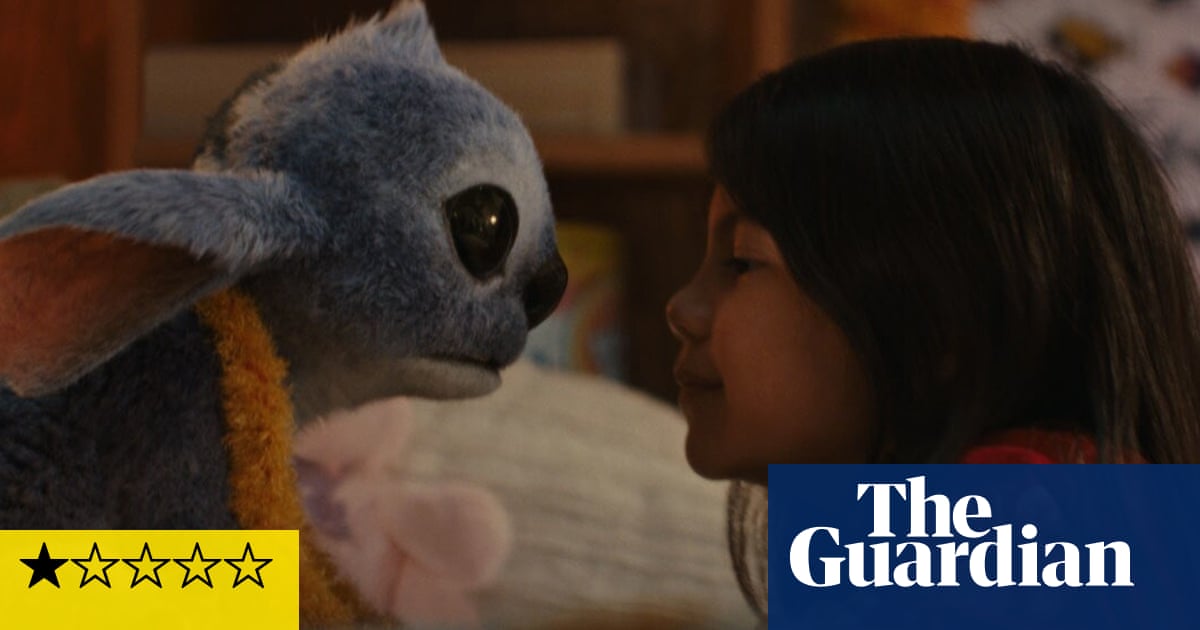Ahead by a nose … a rabbit chases a hare in a surprising turn of events in Anglesey, UK
Photograph: Stuart Benson/SWNS
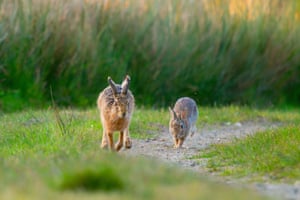
Rangers at Lewa wildlife conservancy in Kenya prepare to notch the ear of Quintus, a tranquillised three-year-old-male white rhino. They are carrying out the operation on 40 sub-adult rhinos, hoping it will help them identify individuals and monitor the species
Photograph: Thomas Mukoya/Reuters
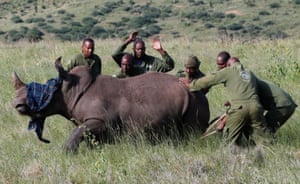
A mother and baby humpback whale in Kiama, New South Wales, Australia. Humpback whales give birth while migrating – and carry on travelling with their babies, new research reveals. Researchers were puzzled as baby whales were spotted in unexpected places along Australia’s “humpback highway” between Queensland and Antarctica. Newborns have been seen in colder waters as far south as Tasmania, suggesting humpbacks’ habits of breeding and migration are more complex than we thought
Photograph: Vanessa Risku/SWNS
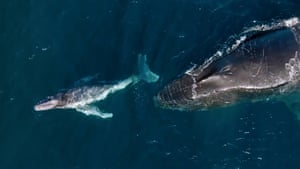
Feelin’ blue … two colourful waterfowl emerge from a contaminated lake in the botanical garden in Jundiaí, Brazil. The lake water was tinted blue after a truck carrying five tanks, each containing 1,000 litres of dye, crashed and spilled all its cargo
Photograph: Sebastião Moreira/EPA
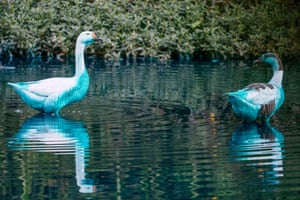
This hazel dormouse is being given a once-over by a disease risk team at ZSL London Zoo, UK, as part of reintroduction programme. The dormice will be released to a new woodland home in June, and so the specialist wildlife health team must ensure they are fit and healthy beforehand …
Photograph: David Levene/The Guardian
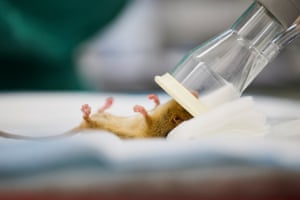
… but undergoing all those medical checks really takes it out of you
Photograph: David Levene/The Guardian

A mother mute swan attends to her cygnets at Abbotsbury Swannery, Dorset, UK. The arrival of mute swan cygnets is traditionally seen as the start of summer, and it’s said the Benedictine monks who owned the swannery between about 1000 and the 1540s believed the first cygnet signalled the season’s first day
Photograph: Finnbarr Webster/Getty Images
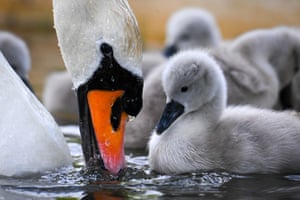
A lion sits in a cage waiting to be transported to Mazatlan on Mexico’s west coast. Hundreds of animals including elephants, crocodiles, lions and tigers have been moved out of a violence-torn Mexican cartel heartland further north in an operation described as a “21st-century Noah’s Ark”. Regular roadblocks and armed clashes in the region made it difficult for the sanctuary’s workers to keep the captive wildlife fed. In total, about 700 animals were moved to a ranch on the coast
Photograph: Félix Márquez/AP
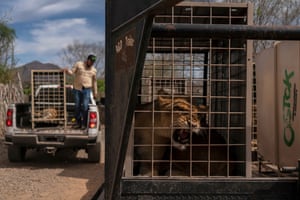
A vet checks over a rescued baby orangutan seized from the illegal wildlife trade at the Royal Forest Department’s wildlife clinic in Bangkok, Thailand. Two baby orangutans were rescued after Thai police arrested a suspect who was about to hand them over to a would-be buyer
Photograph: Rungroj Yongrit/EPA
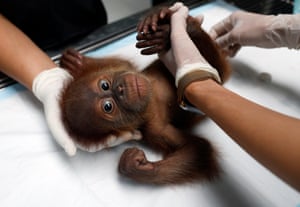
Video footage shows a baby howler monkey clinging onto a young adult male capuchin monkey on Jicarón Island, Panama. Scientists have spotted surprising evidence of what they describe as monkey kidnappings while reviewing video footage from the small island. Capuchin monkeys were seen carrying at least 11 howler babies between 2022 and 2023 – but no one is sure why they do it
Photograph: Brendan Barrett/AP
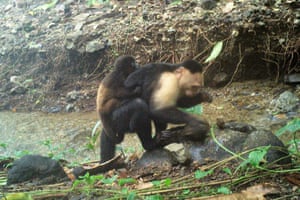
A souslik, or ground squirrel, feeds in a meadow near Karaman, Turkey. With its yellowish fur, spots and alert posture, it can look oddly like a real-life Pikachu
Photograph: Anadolu/Getty Images
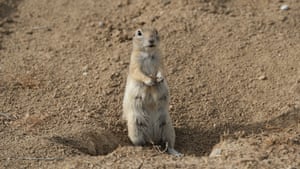
A group of Orinoco crocodile hatchlings are released into the wild at the Capanaparo River, in a remote corner of Venezuela. For decades, the Crocodile Specialist Group have been raising younglings of the critically endangered species in captivity in a race against time to avoid its extinction, as fewer than 100 Orinoco crocodiles remain in the wild. Decades of poaching for leather has pushed the species to the brink, and now struggling Venezuelans who hunt the animals for meat and take their eggs for food threaten to deal the final blow
Photograph: Gaby Oráa/Reuters
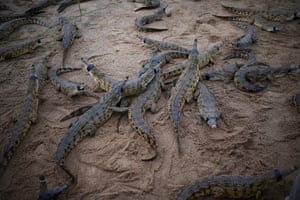
Honeybees return to their hive in Wehrheim near Frankfurt, Germany. Plants can “hear” bees buzzing and serve up more nectar when they are nearby, scientists have found. Amazingly, they can tell the difference between a bee’s buzz and that of a non-pollinating insect such as a wasp
Photograph: Michael Probst/AP
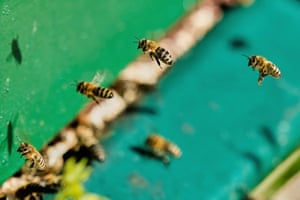
A colony of sand martins come and go from their nests at Yumurtalık lagoon in Adana, Turkey
Photograph: Anadolu/Getty Images
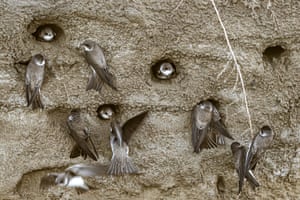
Two damselflies form a heart shape (almost) as they mate in warm weather in County Armagh, UK
Photograph: David Hunter/Alamy Live News

A lion rests on a dead tree on the savannah at the Lewa wildlife conservancy, Kenya
Photograph: Thomas Mukoya/Reuters
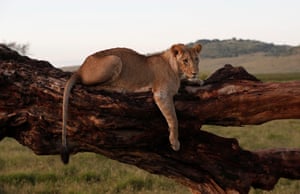
A fox cub plays in a garden in Clapham, London, UK, closely watched by a parent. As they play, the cubs are also learning how to chase and pounce
Photograph: Anna Watson/Alamy Live News
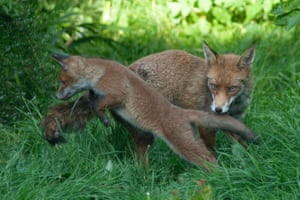
Seagulls squabble along the banks of the Tejo River in Portugal
Photograph: Anadolu/Getty Images
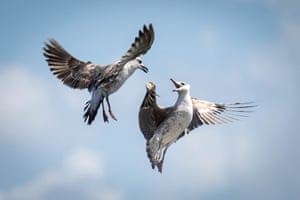
A swallowtail butterfly sits on a blooming flower in a butterfly garden at Benchakitti park in Bangkok, Thailand
Photograph: Manan Vatsyayana/AFP/Getty Images
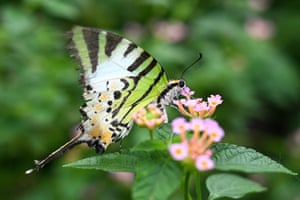
An alligator lurks in a manmade canal at the Everglades national park, Florida, US
Photograph: Chandan Khanna/AFP/Getty Images

A peacock displays its feathers at a park in Singapore
Photograph: Roslan Rahman/AFP/Getty Images

A stork mother guards her chicks from passing traffic on the outskirts of Frankfurt, Germany
Photograph: Michael Probst/AP


 3 months ago
50
3 months ago
50












